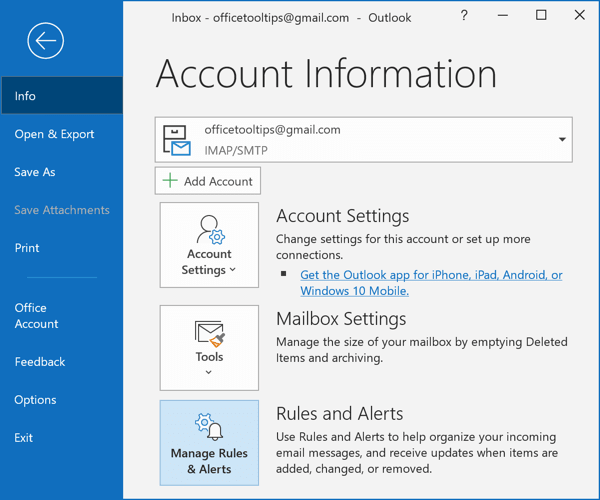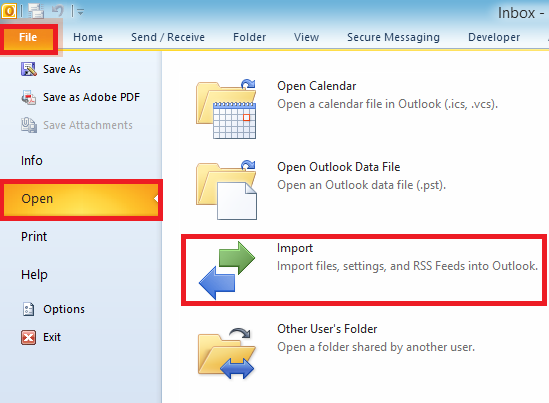

- #Export 2007 outlook email settings install#
- #Export 2007 outlook email settings archive#
- #Export 2007 outlook email settings windows#
You can also choose the option to Show hidden files and folders, although its not necessary since we are in the hidden folders. This makes it easier for you to see the files you are copying.
#Export 2007 outlook email settings windows#
In Windows 7, show file name extensions on the Organize, Folder and Search Options, View tab. If you have Windows configured to hide extensions, enable File name extensions on Window Explorer's View ribbon. If you have 265KB or 513KB PST files, they are empty and don't need to be moved. If you have several PSTs in the folder and aren't sure which one is the one with your data, look at the file dates and file sizes. You'll copy the PSTs to the new computer. Outlook can hold PST files open for as long as 30 minutes after you close Outlook if you receive any errors when copying the PST, wait a few minutes and try again. Note that Outlook needs to be closed to copy a pst that is in the active profile. You need to copy the Outlook Data Files (PST). You'll see a list of files in the Outlook folder. When the pst files are in the default location for Outlook 2007 and older (in C:\Users\username\AppData\Local\Microsoft\Outlook), you can quickly access the default PST location from Windows Explorer by pasting this line in Windows Explorer's address bar to jump to the folder. In Outlook 2010 (and up), the default location for *.pst files used for POP3 or for calendar and contacts is in Documents\Outlook Files. In most cases, they will be in the default location Outlook uses. If you have Outlook items in the 'This computer only' folders, you'll need to export the Calendar, Contacts, and Tasks (and Notes) from these folders to a CSV file to use them on the new computer. Outlook will create a new data file.īeginning with Outlook 2013, Outlook uses an *.OST file for IMAP accounts, and can store Calendar, Contacts, and Tasks in the *.OST file, in folders labeled '(This computer only)'. You'll need to copy the *.PST used for calendar and contacts to the new computer.

If you have an IMAP account in Outlook 2010 or older, you'll have email in one PST file and a separate *.PST file for Calendar, Contacts, Tasks, and Notes. The PST file contains your POP3 email, calendar, and contacts. If you need to recover pst files from a hard drive removed from a crashed computer, see Recover Outlook Data Files from a Crashed Computer It's not necessary to move data files used for IMAP email,, or Exchange mailbox as the mail (and calendar and contacts for and Exchange) are stored on the mail server. If you use POP3 or have archives or local PST files in your profile, you'll need to move them to the new computer.
#Export 2007 outlook email settings install#
#Export 2007 outlook email settings archive#
If you use Exchange accounts (including ), you only need to move archive PST files everything in the mailbox will sync down to the account on the new computer.


 0 kommentar(er)
0 kommentar(er)
